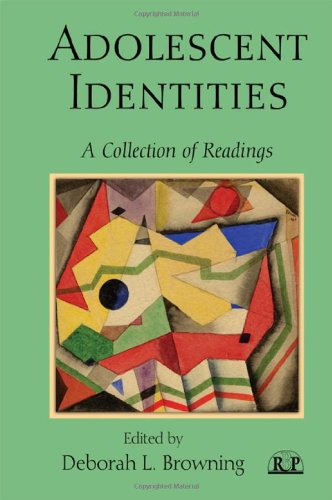

Most ebook files are in PDF format, so you can easily read them using various software such as Foxit Reader or directly on the Google Chrome browser.
Some ebook files are released by publishers in other formats such as .awz, .mobi, .epub, .fb2, etc. You may need to install specific software to read these formats on mobile/PC, such as Calibre.
Please read the tutorial at this link. https://ebooknice.com/page/post?id=faq
We offer FREE conversion to the popular formats you request; however, this may take some time. Therefore, right after payment, please email us, and we will try to provide the service as quickly as possible.
For some exceptional file formats or broken links (if any), please refrain from opening any disputes. Instead, email us first, and we will try to assist within a maximum of 6 hours.
EbookNice Team

Status:
Available0.0
0 reviewsAdolescent Identities draws the reader into the inner world of the adolescent to examine the process of identity formation through the various lenses of history, anthropology, sociology, psychology, and psychoanalysis.
The volume reveals there is no single "normal" adolescent, nor is there a singular adolescent experience. Editor Deborah L. Browning illustrates that in the course of development, each individual must integrate one’s unique biologically-given constitution and temperament, personal life history, and the influence of the social and cultural milieu.
The book consists of six sections, arranged by concentric circles of influence, from the most exterior, identifiable, and potentially overt and conscious, to the most internal, private, and potentially unconscious concerns. Opening papers are drawn from sociology, European history, and cross-cultural anthropology, and address the question of whether and how adolescence can be considered a stage in development.
The second section explores how visible or potentially knowable minority statuses are experienced, and how these interact with individual identity processes. Moving closer to the adolescent’s interpersonal world, the third section presents papers about intimate relationships between adolescents and about the conscious preoccupations of adolescents when they are alone.
Extensive excerpts of Erikson’s most important contributions on identity formation and adolescence are offered in the fourth section. Papers on the most internal, private, and potentially unconscious conflicts comprise the fifth section. The book concludes with a section of papers on "failed solutions" to the challenge of adolescent identity consolidation: homelessness, drug abuse, eating disorders, and suicide.
Adolescent Identities provides mental health practitioners, teachers, and graduate students in both fields with a variety of perspectives on the internal experience of adolescents.